PRESENTATION:Keiichi Tanaami-Adventures in Memory
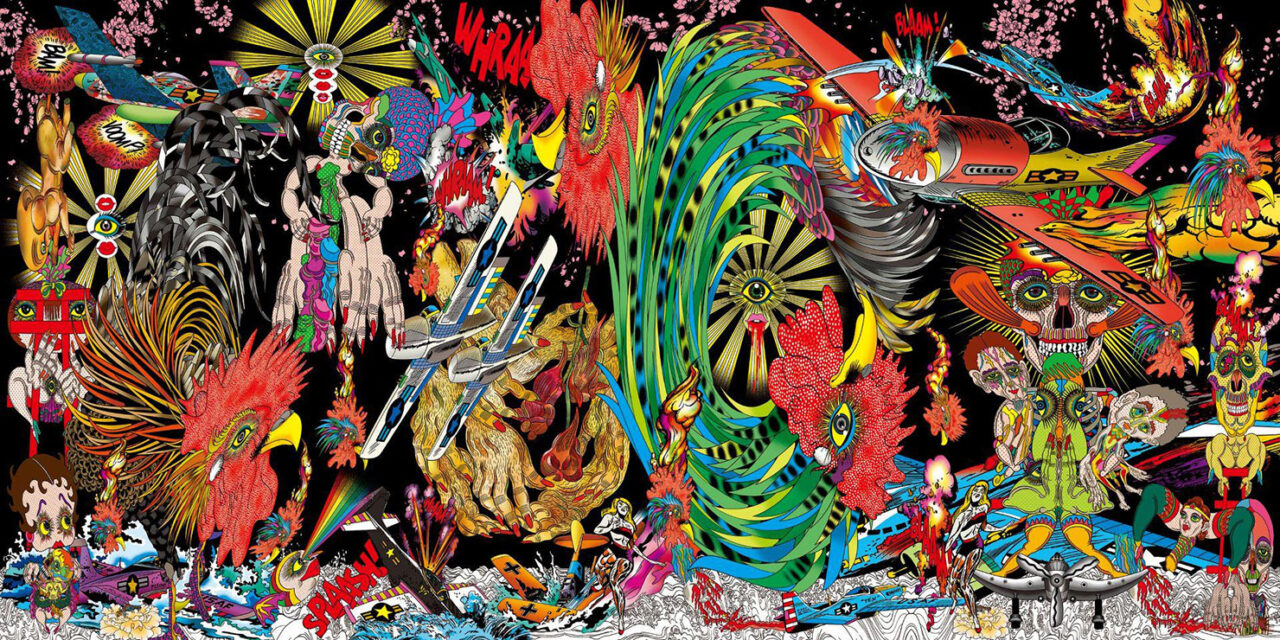 Rising to prominence in the 1960s, Keiichi Tanaami found early success early by creating images now deeply forged in the cultural landscape of both Japan and the United States. He is widely considered the progenitor of the Superflat movement, embodied today by Takashi Murakami and Yoshitomo Nara, among others. Tanaami’s work first registered the influence of manga and the Neo-Dada movement in Japan, mingling with his childhood experience of the Second World War, a recurring motif via images of air raids, flares, and blasts of white light from the detonation of explosives. His paintings also reflect memories of kamishibai—public theater productions for Japanese children—that beguiled his mind and eye as a child.
Rising to prominence in the 1960s, Keiichi Tanaami found early success early by creating images now deeply forged in the cultural landscape of both Japan and the United States. He is widely considered the progenitor of the Superflat movement, embodied today by Takashi Murakami and Yoshitomo Nara, among others. Tanaami’s work first registered the influence of manga and the Neo-Dada movement in Japan, mingling with his childhood experience of the Second World War, a recurring motif via images of air raids, flares, and blasts of white light from the detonation of explosives. His paintings also reflect memories of kamishibai—public theater productions for Japanese children—that beguiled his mind and eye as a child.
By Efi Michalarou
Photo: NACT Archive
The exhibition “Adventures in Memory” is the first major retrospective showcasing the internationally acclaimed artist Keiichi Tanaami. Tanaami is known for vivid, color-drenched works that intensely reflect his childhood memories of World War II and the impact of the American pop culture he encountered after the war. The exhibition presents an array of works by the astoundingly productive artist, including archival materials from past decades, tracing the entirety of Tanaami’s creative journey over more than 60 years. This unprecedented, comprehensive exploration of Tanaami’s oeuvre is organized around the theme of “memory.” After enrolling in the college of design at Musashino Art University, Tanaami befriended avant-garde artists such as Ushio Shinohara, Genpei Akasegawa, and Shusaku Arakawa, and was exposed to their cutting-edge activities. In 1957, while still a student, he won a special selection award at the Japan Advertising Art Exhibition, held by the Japan Advertising Artists Club. He began taking on design jobs while still enrolled in school, and joined the Hakuhodo ad agency after graduating. After about two years he left Hakuhodo and became independent, not only holding gallery exhibitions but also publishing a collection of works in 1966 titled “A Portrait of Keiichi Tanaami”, which can be described as the starting point of his career as an artist. Profoundly inspired by Andy Warhol’s approach to art and design, which refused to be limited to any one medium, he came to describe himself as an “image director.” Tanaami went on to prolifically produce silkscreened posters, collages, animations, illustrations, paintings and more. By the late 1960s, Keiichi Tanaami was engaged in editorial design for numerous magazines covering music, movies, and literature, and in 1975 he became the first art director of the monthly magazine PLAYBOY (Japanese edition). Around the same time, he also began producing experimental films and holding screenings with filmmaker Toshio Matsumoto, steadily expanding the scope of his creative endeavors. A trip to China, and hallucinations he experienced during a four-month hospitalization in 1981, inspired him to produce images reminiscent of Oriental paradises and fantastical labyrinths in the 1980s. In 1991 Tanaami became a professor at Kyoto University of Art and Design, where he has helped to foster artists of younger generations. Around 2000, Tanaami began combining various motifs appearing in his earlier works to create even more complex and dynamic images. For Tanaami, creating art is a process of tracing past memories and seeking to interpret how these memories have evolved within him at a subconscious level. At the age of 88, Keiichi Tanaami continues to create with undimmed energy, enthralling artists and designers of many generations and nationalities and receiving a deluge of requests for collaborations. This can be attributed to his inimitable sensibilities and continuous renewal of his style and methodologies over more than six decades of activity. Recently, Tanaami has gained growing international recognition as a postwar Japanese artist who interprets global culture in a truly distinctive manner.
The works on view include “ORDER MADE!!”Series (1965), which drew inspiration from Andy Warhol and was one of the first examples of Japanese Pop Art; “NO MORE WAR” Series (1967), a finalist in an anti-Vietnam War poster contest held by the American magazine Avant Garde; and the animation “Good-by Marilyn” (1971), created using collage techniques for the TV program 11PM. These and many other works illuminate the counterculture that blossomed in Japan after World War II. “NO MORE WAR” Series, (1967): While still a student, Tanaami began exploring various means of reaching a broader audience with his works, and became increasingly interested in techniques of reproduction such as printing and printmaking. Influenced by American comics and Pop Art, he began working with silkscreen in the mid-1960s. His works in the medium include this series, which he submitted to an anti-war poster contest organized in 1968 by the American magazine Avant Garde, where it was selected as an outstanding work. Tanaami’s halftone backgrounds, appropriations of photographs, and comic-inspired layouts not only highlight his interest in reproduction through print, but also showcase his sublime command, as a designer, of layout and color usage. “Good-by Marilyn” (1971): Since childhood, Tanaami has maintained a keen interest in film, and he began producing animated works in the mid-1960s. In the early 1970s, he was commissioned by television programs to produce several animations. One notable work features repeated images of hot dogs, bananas, and Marilyn Monroe in eroticized scenes that unfold over four and a half minutes. Images of the Statue of Liberty and Disney characters, along with cutouts from pornography, are interspersed throughout, delivering a singular interpretation of American popular culture. However, as the title hints, around this time Tanaami began gradually distancing himself from American iconography, shifting the focus of his work towards his own memories. This work can be said to represent a transitional phase of his career. “Tokiwa-matsu” Series (1986-87): In 1981, Tanaami was diagnosed with tuberculosis and hospitalized for nearly four months. Hovering between life and death, he experienced a long series of intense nightly hallucinations due to the strong side effects of medication. These visions included recurring imagery such as the Salvador Dalí painting “The Madonna of Port Lligat” and the pine trees in the hospital garden appeared to him to be twisted and contorted. Tanaami documented what he saw in more than ten notebooks, and these vivid hallucinations while hospitalized propelled him in new creative directions. A visit to China in 1980 had already reignited his interest in Asian culture, and in the 1980s he began depicting fantastical worlds, evocative of mysterious spiritual paradises and labyrinths, that combined images of pine trees and artificial urban landscapes.
“The Story of Death and Rebirth” (2019): This colorful work comprises motifs deeply linked to Tanaami’s childhood memories of wartime. For the artist, death has been a crucial theme and a continual source of creative energy. Here, numerous fighter planes sink into the sea while sprite-like creatures fl oat in midair, presenting a vision of a chaotic world that evokes the cycle of reincarnation. In terms of technique, in the 2000s Tanaami began working with digital data, which enabled him to amplify images infinitely across various media. His ability to seamlessly introduce images into videos and sculptures further illuminates the protean nature of his talent, which has been increasingly notable in recent years. “Pleasure of Picasso – Mother and Child Series” (2020- ): As the COVID-19 pandemic swept the world, it also brought changes to Tanaami’s practice. With scheduled exhibitions and other plans disrupted, Tanaami began using some of his newfound free time to copy Pablo Picasso’s “Mother and Child”, a painting he has long admired. He initially intended to make about ten copies, but the number steadily grew, and to date he has produced over 500 works. Tanaami, who has said that constraints stimulate his creativity, has developed his own narrative over the course this series by incorporating diverse images into the basic format of Picasso’s Mother and Child. For Tanaami, this series is akin to the Buddhist practice of transcribing sutras, and it continues to be a part of his daily routine. “Inconceivable Body” (2019): This sculpture consists of a stack of faces, each with a powerful gaze that seems to penetrate the viewer. A complex amalgamation of skulls, spiders, chickens, goldfish, undulating pine trees and other imagery is synthesized into a single entity that appears to be thrumming with life force. Tanaami has described the bizarrely shaped creatures that he frequently portrays as people wounded in wars, and as embodiments of the fearless side of all human beings. Since the 2000s, he has been making sculptures inspired by Buddhist statues such as the Thousand-Armed Kannon, and he has spoken of an “enduring fascination with menacing, shape-shifting sacred icons.” This piece is among those resembling an aberrant Buddhist statue, depicting creatures from the Buddhist paradise of the Pure Land as envisioned by Tanaami.
Photo: Keiichi Tanaami, The Story of Death and Rebirth, 2019, Pigmented ink, acrylic silkscreen medium, crushed glass, glitter, and acrylic on canvas, 200×400 cm(4 canvases), © Keiichi Tanaami, Courtesy the artist and The National Art Center Tokyo (NACT)
Info: The National Art Center Tokyo (NACT), 7-22-2 Roppongi, Minato-ku, Tokyo, Japan, Duration: 7/8-11/11/2024, Days & Hours: Mon & Wed-Thu & Sun 10:00-18:00, Fri-Sat 10:00-20:00, www.nact.jp/
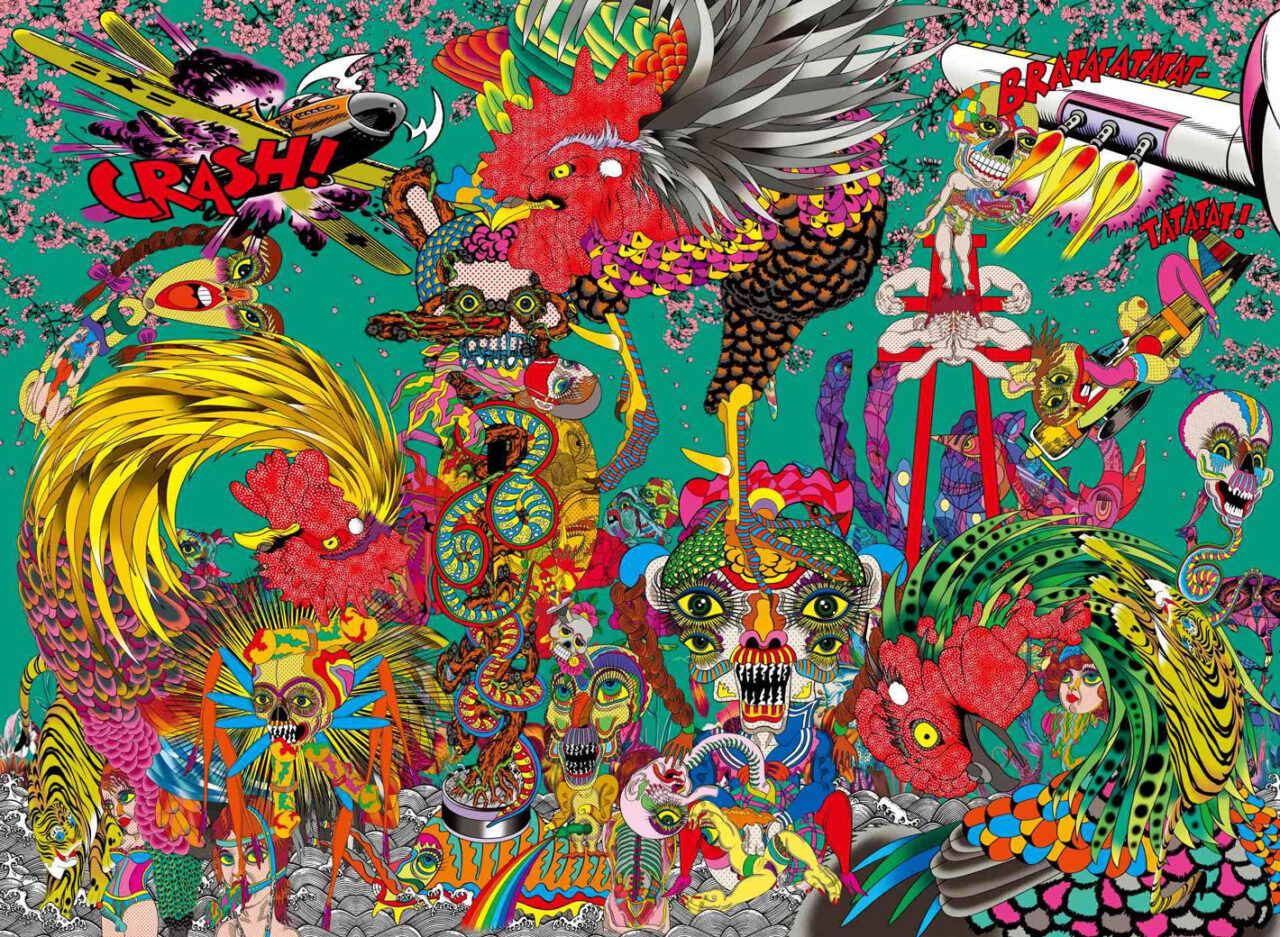
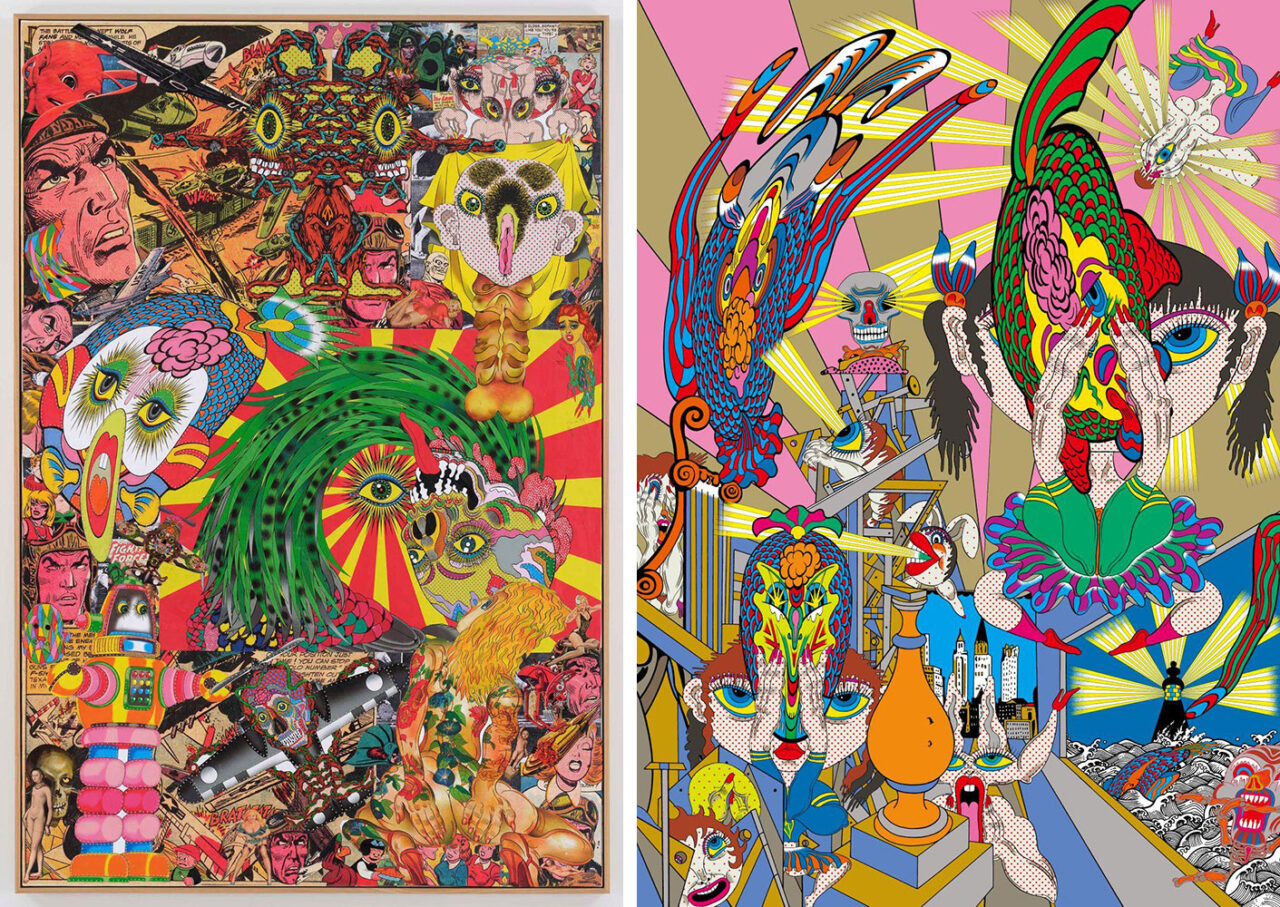
Right: Keiichi Tanaami, Chirico’s Theater, 2009, Acrylic on canvas, 195×145.5 cm, © Keiichi Tanaami, Courtesy the artist and The National Art Center Tokyo (NACT)

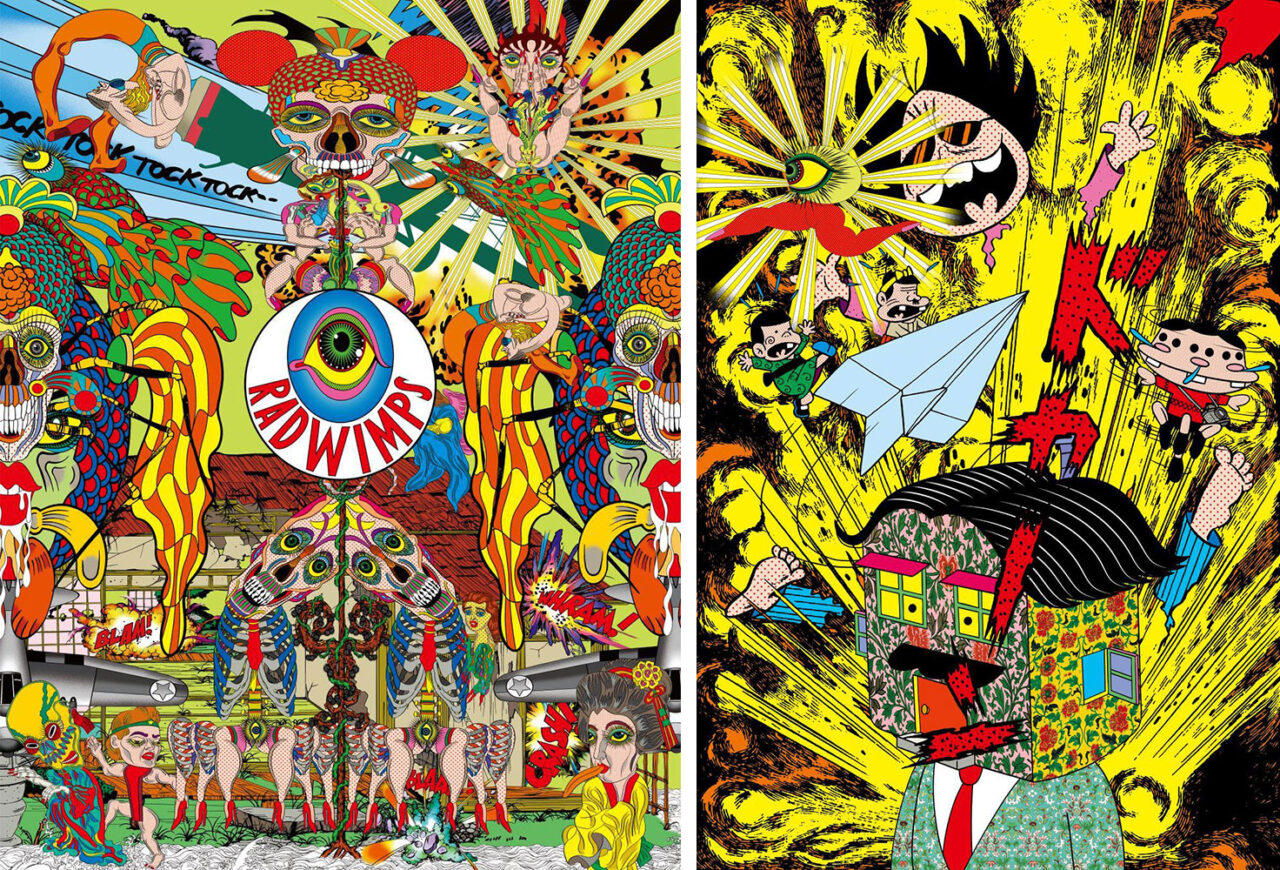
Right: Keiichi Tanaami, Kaboom, 2022, Pigmented ink, acrylic silkscreen medium, crushed glass, glitter, and acrylic on canvas, 149×100 cm, © Keiichi Tanaami, Courtesy the artist and The National Art Center Tokyo (NACT)

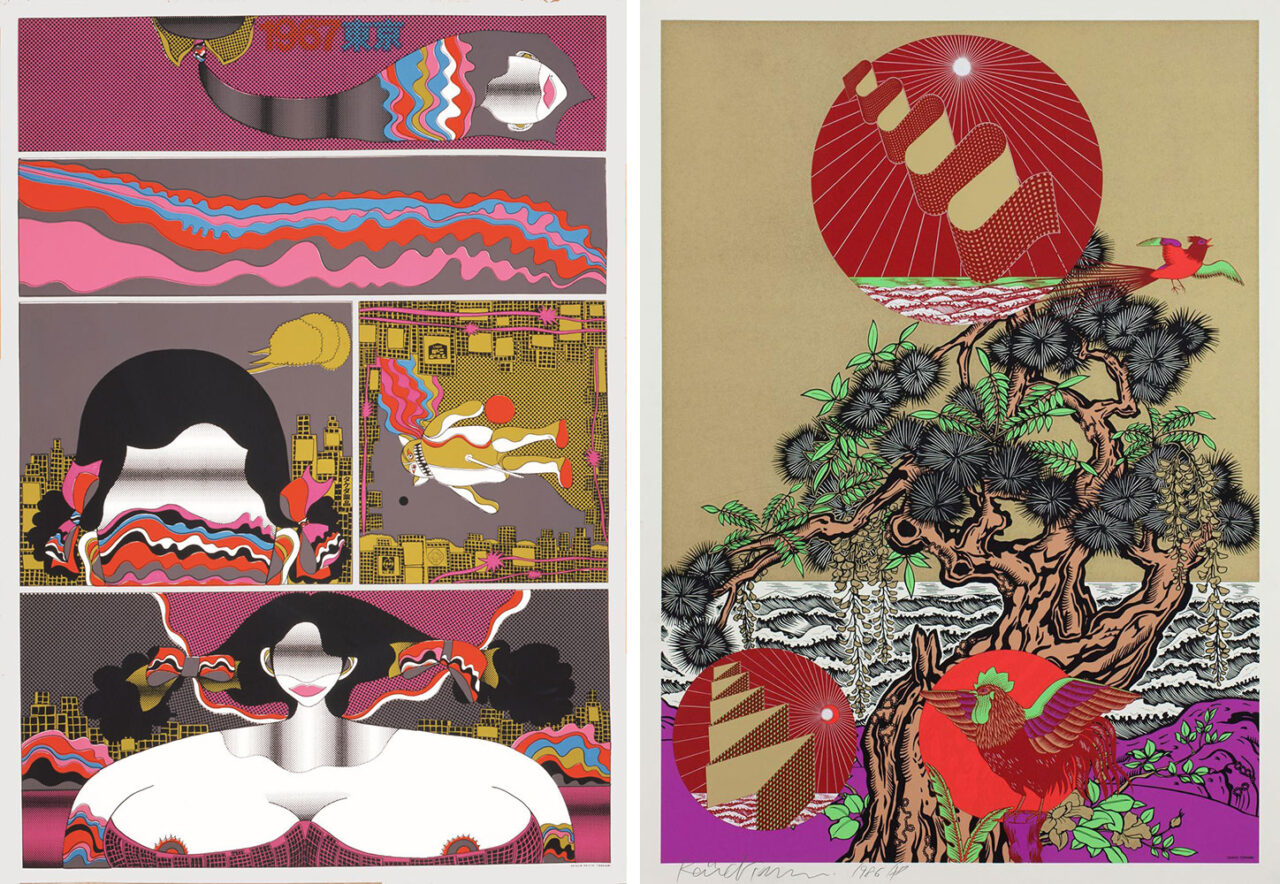
Right: Keiichi Tanaami, Tokiwa-matsu, 1986, Silk screen print on paper, 103×73 cm, © Keiichi Tanaami, Courtesy the artist and The National Art Center Tokyo (NACT)
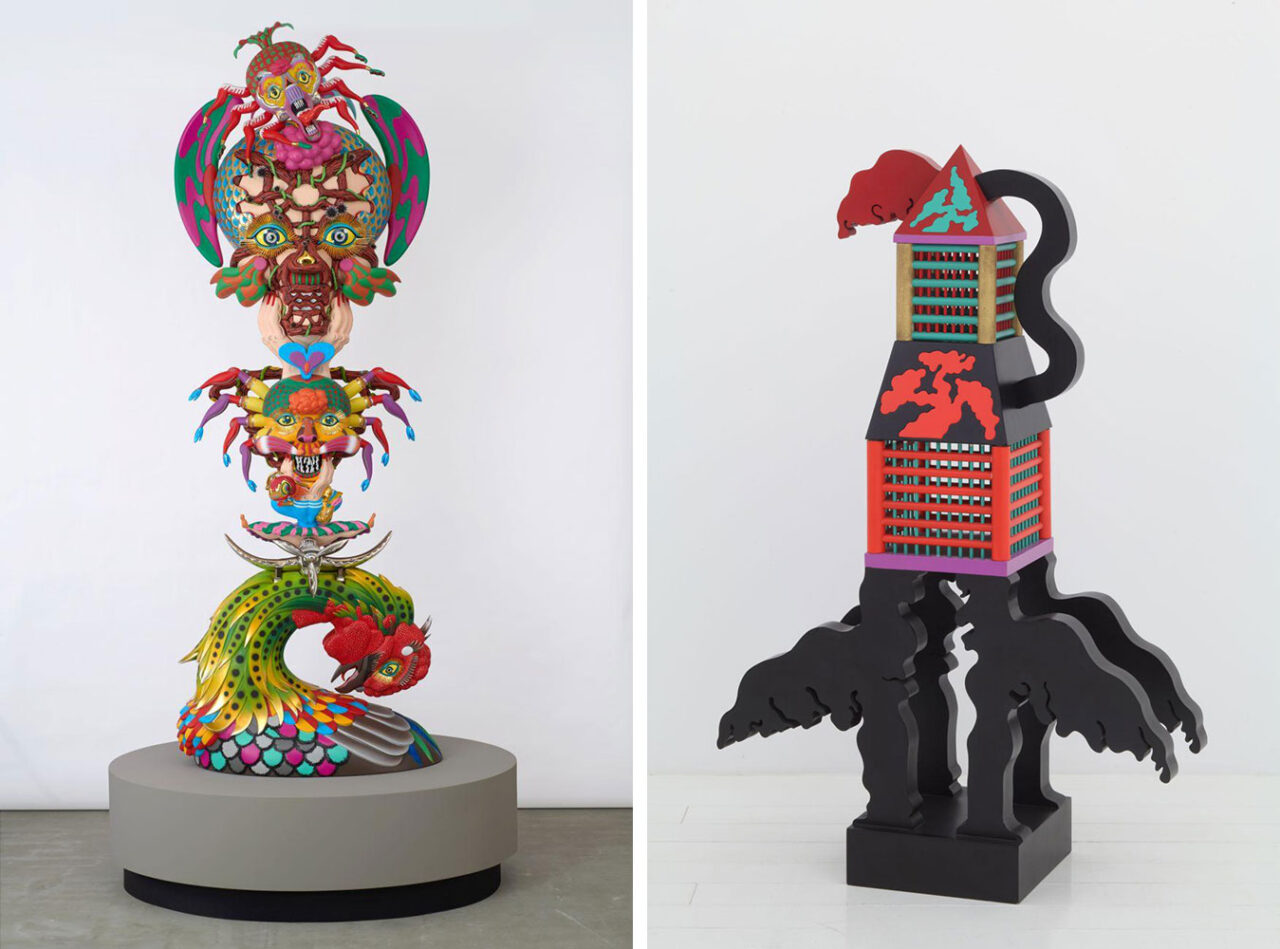
Right: Keiichi Tanaami, The House in Ascension, 1987, Wood and lacquer, 100×63.5×24 cm, © Keiichi Tanaami, Courtesy the artist and The National Art Center Tokyo (NACT)
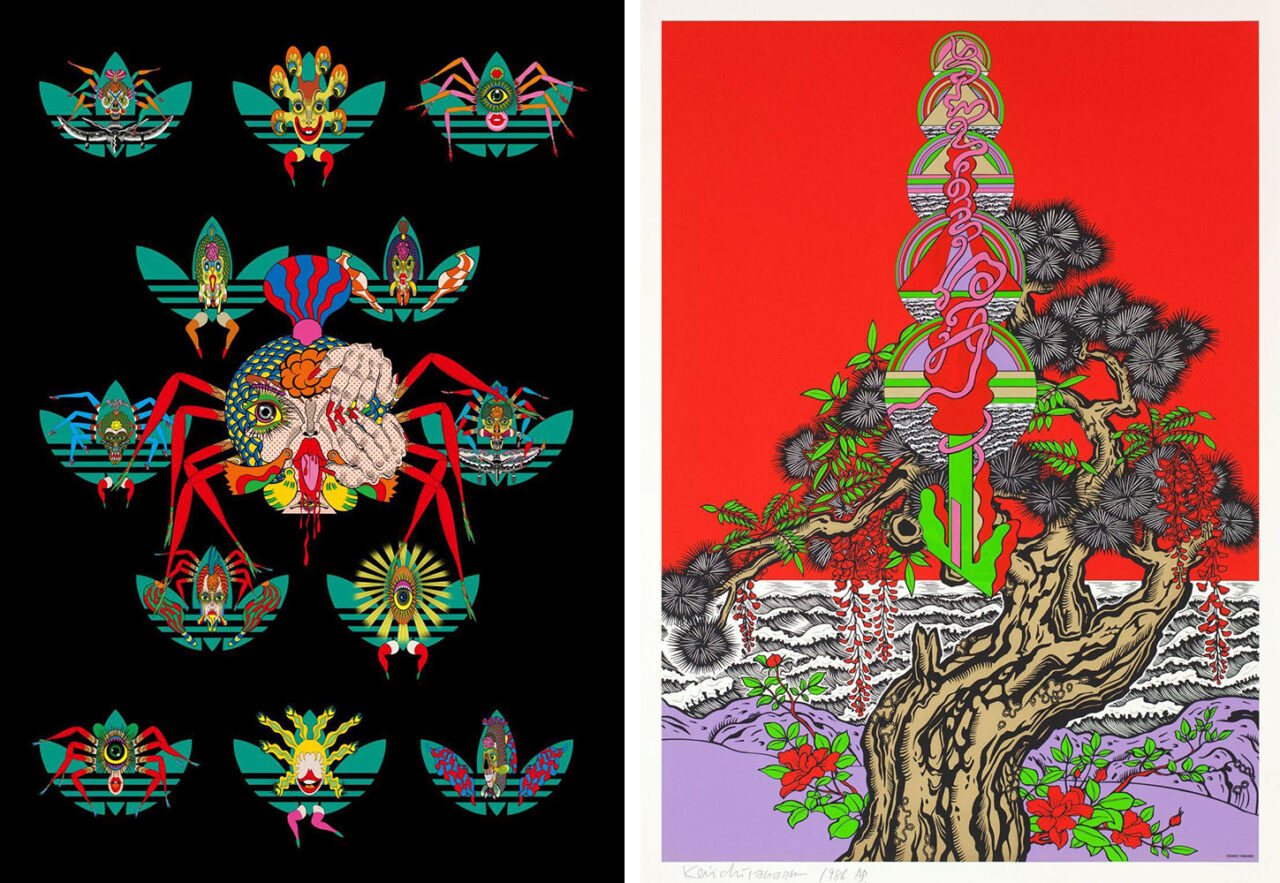
Right: Keiichi Tanaami, Tokiwa-matsu, 1986, Silk screen print on paper, 103×73 cm, © Keiichi Tanaami, Courtesy the artist and The National Art Center Tokyo (NACT)
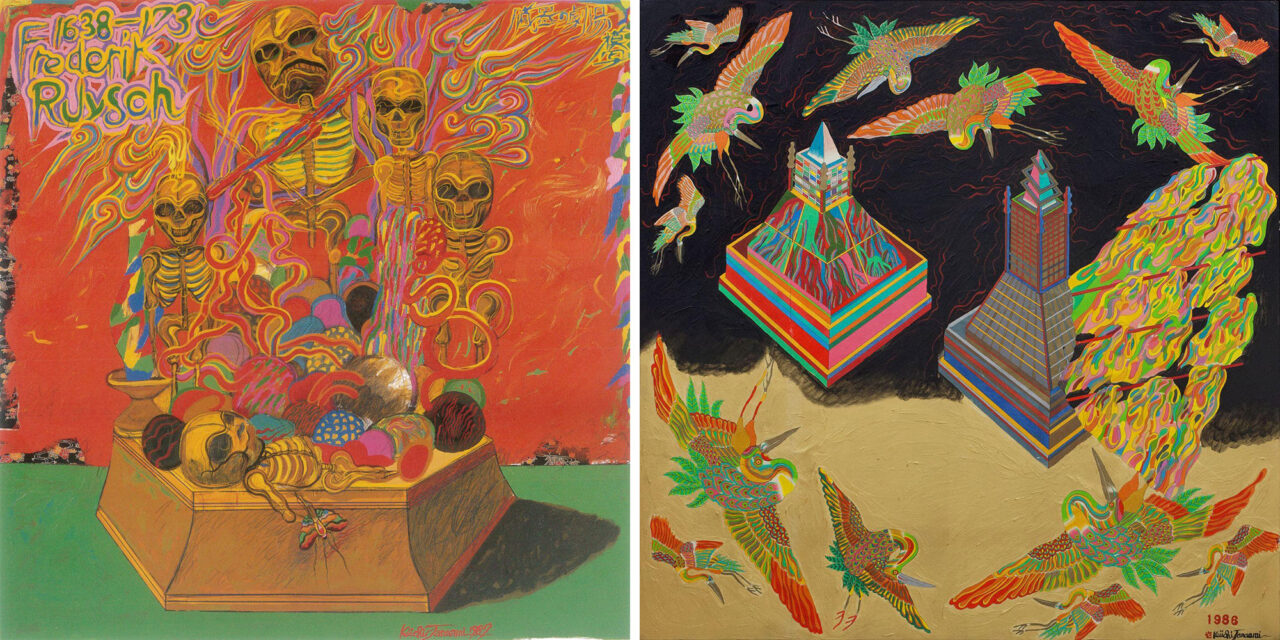
Right: Keiichi Tanaami, Passage, 1986, Acrylic and color pencil on paper mounted on canvas, 130.5×130.5 cm, © Keiichi Tanaami, Courtesy the artist and The National Art Center Tokyo (NACT)


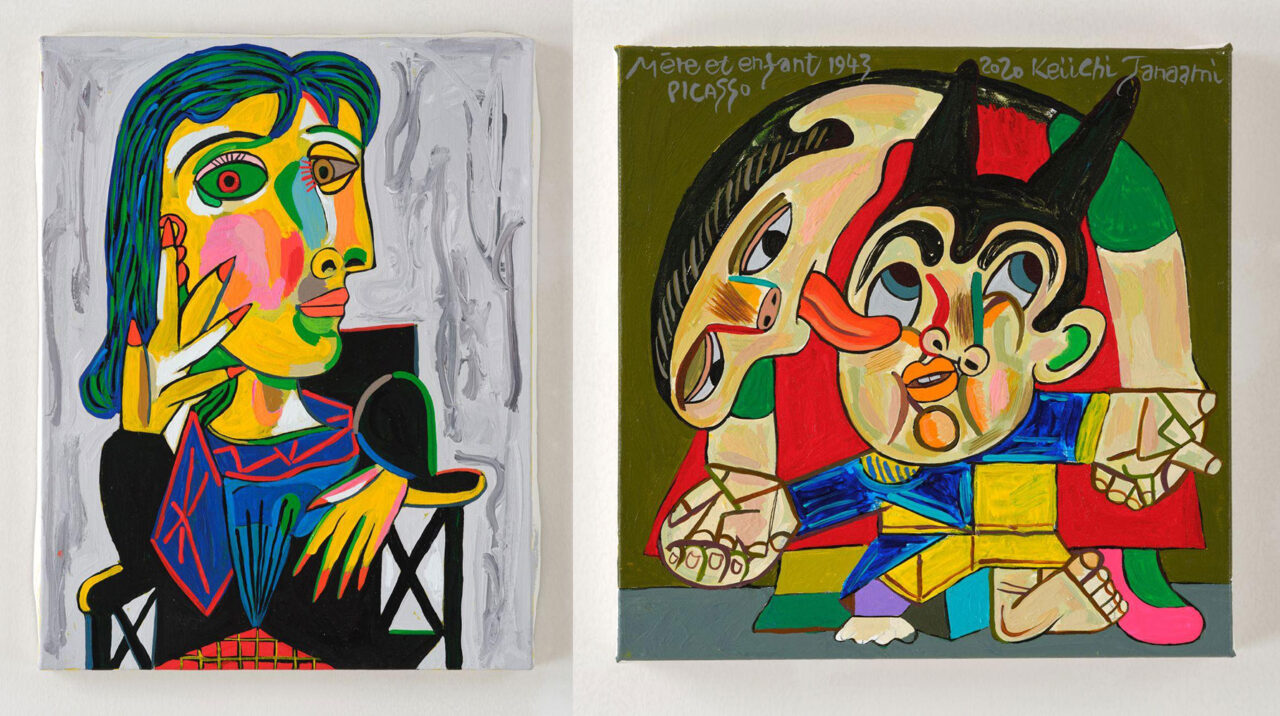
Right: Keiichi Tanaami, Pleasure of Picasso – Mother and Child, 2020/2021年, Acrylic on canvas, 30×30×3.7 cm, © Keiichi Tanaami, Courtesy the artist and The National Art Center Tokyo (NACT)
